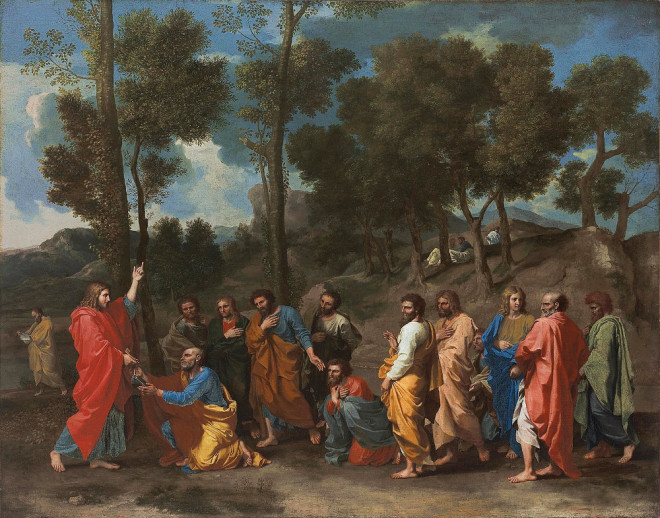Of course, we read the scriptures to receive personal revelation, which is the vertical approach. However, we can take some pointers.
Here is a parable: two men set out to find diamonds in a field where diamonds are known to be found.
One man uses his hands to sift through the soft sand and carefully inspects every handful, and he finds a gemstone here and there working diligently. The other man shows up with tools used for digging — a pick, a shovel, and a screen to separate the fine sand. Who recovers more diamonds, day in and day out — the man who brings the tools appropriate for the job.
So it is with the scriptures. The Lord has given us prophets and “wise men.” You can find additional tools by reading source materials prepared by scholars who have dedicated their lives to gathering information and insight about the subject matter. Biblical scholarship is a flood-light used to illuminate the field.
However, not all scholarship is equal. As Brother Nibley said, — All a good teacher can do is save you time, that is, by pointing you in the right direction. One of the first tasks for a student is to find out who you can trust — who is worth your time. Who will point you in the right direction, who will leave you with the best tools to go forth and discover?
You are preaching to nobody but yourself. If I preach, I preach only to myself. You can see how that is here [in 1st Nephi]. Others may pick it up, as far as that goes. That’s like teaching the point; that’s all you do. You can’t teach a person; that’s not a transitive verb. You might hit a person or see a person, but you can’t teach a person. What do you do when you teach a person? Well, the word for teach is touch, tactile, didactic. That’s when you point to something. Teach is the same word as touch. It just means point the finger. All I can do is point. You look and then you see for yourself. I don’t go directly from one person to another that way. So the teacher is just didactic. He teaches and points so others may pick it up.(Hugh Nibley’s Teachings of the Book of Mormon, Part 1, page 167)
Bring all you can to the scriptures, and then ask for personal revelation on the subject. This approach requires some outside effort. One must digress just a bit and read someone else’s opinion on the subject matter. For example, understanding “the manner of the Jews” teaches us that in the scriptures, trees = people; mountains = nations, etc. This approach will tend to net the most diamonds, in my opinion. There are many examples where one man opens the scriptures for another, i.e., the Lord on the road to Emmaus. Phillip opens Isaiah to the Ethiopian.
Eventually, a person may go beyond all the help provided by enlightened scholarship; and in that case, pondering the scriptures with a desire to know the meaning will open the windows of heaven. But until that day, a simple way to help open the flood-gates is to study the words of those who have uncovered some gems, gain some greater light and knowledge, and then go back to the scriptures with tools to unlock the mysteries.


